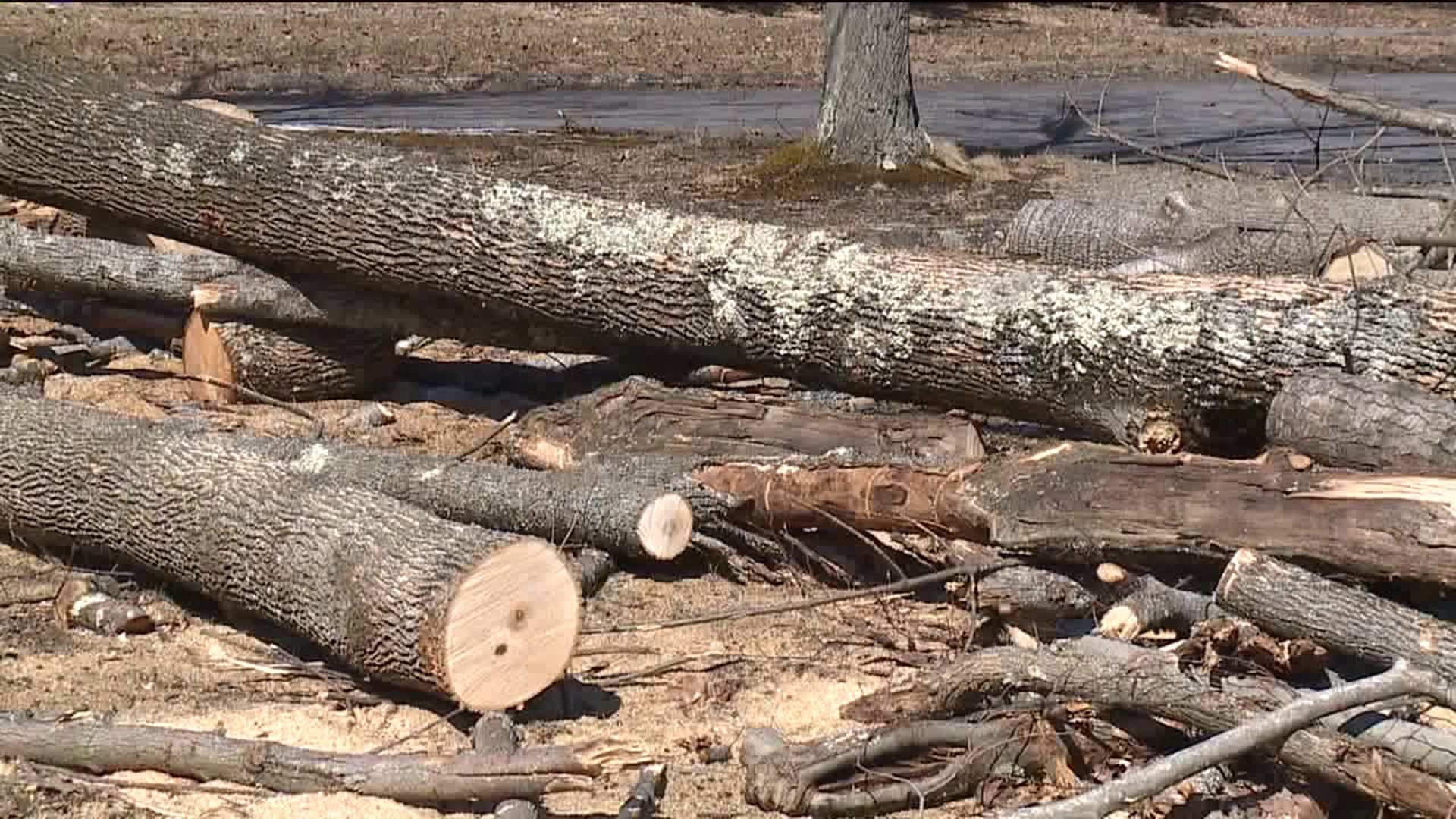LACKAWANNA STATE PARK, Pa. -- A beetle native to Asia that kills ash trees has shown up here in Pennsylvania for over a decade, but now park officials in Lackawanna County are seeing signs of destruction on ash trees there.
Walkers at Lackawanna State Park noticed some changes -- the large number of trees that have been cut down. Park officials are cutting down ash trees because of the emerald ash borer.
If you frequent Lackawanna State Park, you probably noticed more and more trees being cut down over the last few months.
"It's just kind of sad to see them like clear cut," said William Roth. "If you walk up to the top, they're clear-cutting the trees, so it's an injury or a sadness to the earth."
There's a reason park officials are cutting down trees in the park and there is a specific tree they're cutting down: the ash tree.
"It's a fast-growing tree with a high canopy. People would often plant them because you would have shade a lot quicker," said Lackawanna State Park manager Rob Barrese.
The common ash tree is being killed by the emerald ash borer, a beetle native to Asia. It was first identified in Pennsylvania in 2007, but ash trees at the Lackawanna State Park are now showing signs of destruction.
In this story
"Burrows into the tree and it feeds on that living layer between the bark and the tree. In a number of ways, it kills the tree."
Once a tree shows signs of the beetle, it takes about one to three years for the tree to die.
"There's a scaly look to the tree. You'll see that white, flakey, scaly look to the tree. We've experienced that here at the park lately," said Barresse.
Park officials started cutting down trees as soon as they noticed those signs. They say they need to get them down in places like the day-use areas before the trees die and fall on their own.
"We're looking at trees that are extremely hazardous, that are located where our visitors are going to be. The maintenance has had a very aggressive program this spring to get them out of the way," said Barresse.
Barrese says park staff is working very hard to selectively cut affected trees that could impact visitor safety and that there is no clear cutting occurring anywhere in the park.
Officials say the emerald ash borer can now be found in almost every county in Pennsylvania, and that if you have an ash tree in your yard to be aware of the signs of infestation.
Get more information on the emerald ash borer from the state DCNR website.

